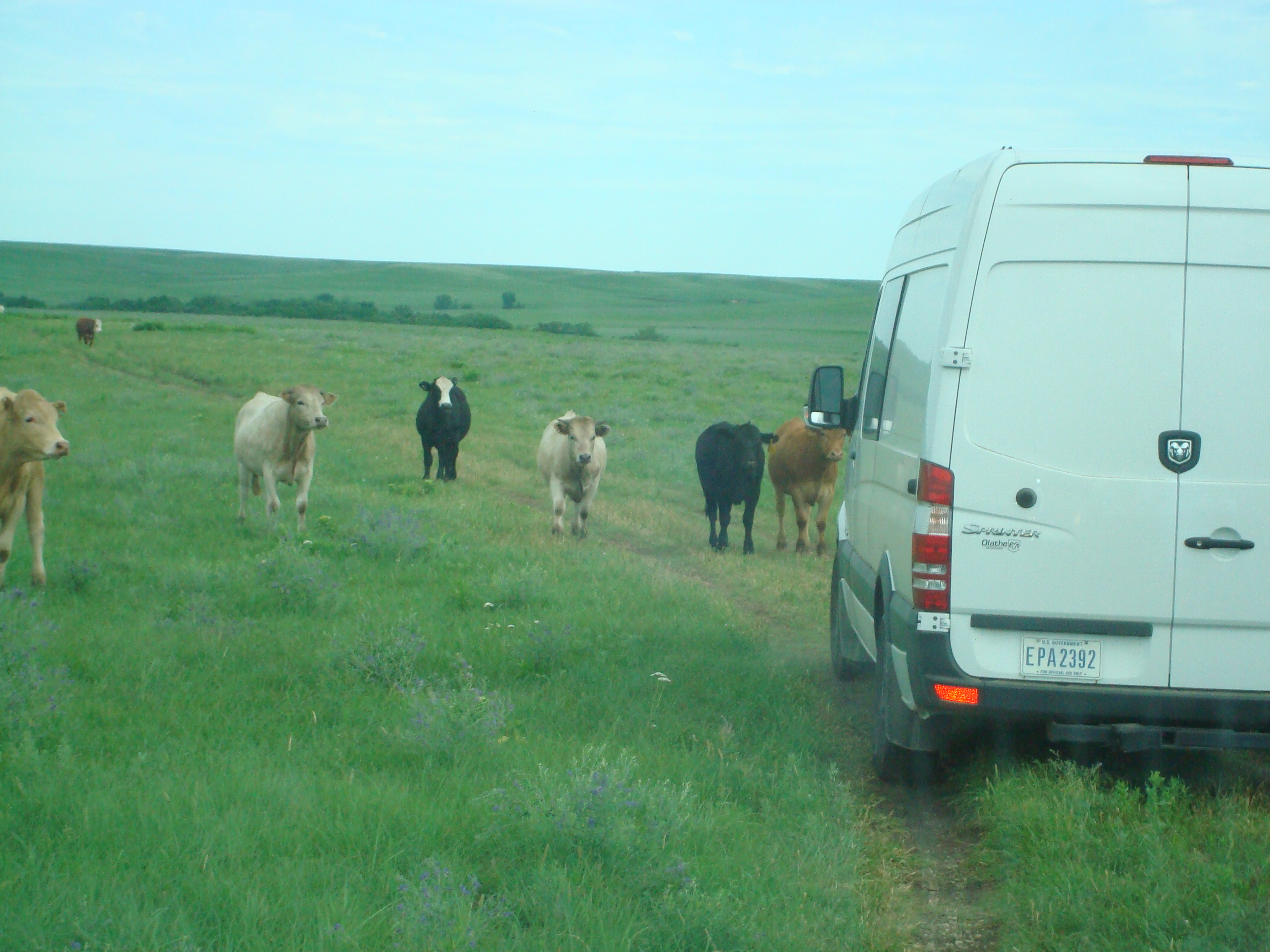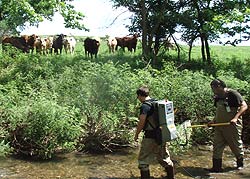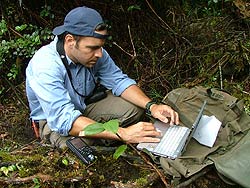We’ll see you in 2012!
Friday, November 28th, 2008About the author: Jeffery Robichaud is a second generation scientist with EPA who started in 1998. He serves as Chief of the Environmental Assessment and Monitoring Branch in Kansas City.
 The silly season is finally over for my staff. No more traveling to small towns off the beaten path. No more chatting with folks at the grain elevator or eating chicken-fried steak smothered in gravy. No more coaxing the locals (of the four hoof variety) to shift their stance to the right or to the left. We won’t be back this way for another 4 years.
The silly season is finally over for my staff. No more traveling to small towns off the beaten path. No more chatting with folks at the grain elevator or eating chicken-fried steak smothered in gravy. No more coaxing the locals (of the four hoof variety) to shift their stance to the right or to the left. We won’t be back this way for another 4 years.
No I’m not talking about the election; I’m talking about our work supporting the National Rivers and Streams Survey (NRSA). This survey helps citizens and governments measure the health of our waters, take actions to prevent pollution, and evaluate the effectiveness of protection and restoration efforts.
Next year Region 7 will be sampling larger rivers and then take a year off as the survey moves to coastal waters. We won’t see our favorite small streams until we do some recon in 2012 in preparation for visiting them again the following year. I would like to say a special thanks to all of those scientists across the country that helped to “GET OUT THE BOAT,” as part of this survey.
 A bit of parting wisdom for all of you future volunteers… I guarantee you getting a cow to change its position is tougher than getting a person. Just look at how distrustful these cows were of Shawn and Bray. They just wanted them to MOOOOOOOve on. Send all requests about the NRSA to riversurvey-ow@epa.gov. Send all complaints about bad puns to robichaud.jeffery@epa.gov.
A bit of parting wisdom for all of you future volunteers… I guarantee you getting a cow to change its position is tougher than getting a person. Just look at how distrustful these cows were of Shawn and Bray. They just wanted them to MOOOOOOOve on. Send all requests about the NRSA to riversurvey-ow@epa.gov. Send all complaints about bad puns to robichaud.jeffery@epa.gov.

 Each week we write about the science behind environmental protection.
Each week we write about the science behind environmental protection.  I am currently collecting samples of soils, leaves, leaf litter, insects that live in the leaf litter, salamanders that eat the insects of the leaf litter, and blood samples from birds that consume both insects and salamanders. In this way I will be able to identify the amount of “biomagnification” in the forest – the extent to which any mercury that is deposited by rainfall is increasingly concentrated in organisms higher and higher up the food chain. The study takes place at multiple elevations, from the banks of the Ashokan Reservoir at 600’ elevation to the headwater streams at the top of the Catskill’s highest peaks at over 4000 feet.
I am currently collecting samples of soils, leaves, leaf litter, insects that live in the leaf litter, salamanders that eat the insects of the leaf litter, and blood samples from birds that consume both insects and salamanders. In this way I will be able to identify the amount of “biomagnification” in the forest – the extent to which any mercury that is deposited by rainfall is increasingly concentrated in organisms higher and higher up the food chain. The study takes place at multiple elevations, from the banks of the Ashokan Reservoir at 600’ elevation to the headwater streams at the top of the Catskill’s highest peaks at over 4000 feet.